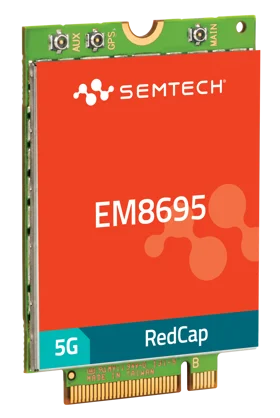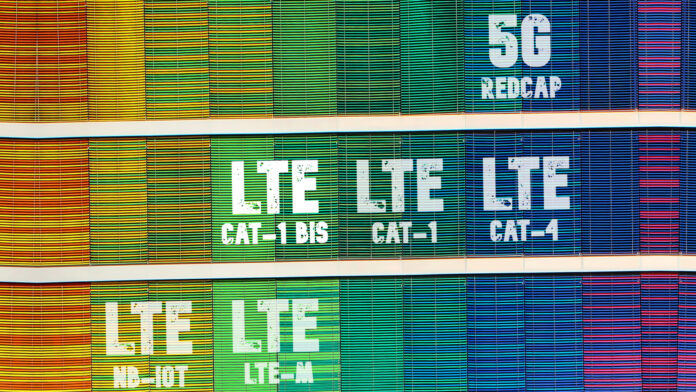Chip maker Semtech Corporation has had its EM8695 5G RedCap module certified by the FCC and PTCRB, the comms regulator and the telco review board in the US, and has also passed tests on mobile operator AT&T’s network. The unit is poised for “carrier certifications across North America”, the California firm said. It called it a “key milestone” for the rollout and “widespread adoption” of reduced-capability 5G (5G RedCap) in the US.
The RedCap unit (pictured below) is produced by the old Sierra Wireless business, which Semtech acquired for $1.2 billion in March 2023 to units together its own LoRa/LoRaWAN property, producing and licensing hardware for low-power wide-area (LPWA) IoT in unlicensed spectrum, and the Canadian firm’s well-established cellular-based IoT business, offering both low-power and higher-performance IoT in global operators’ licensed spectrum.

RedCap offers IoT-like capabilities with 5G-based technology. It supports mid-range IoT applications, including wearables, wireless industrial sensors, video surveillance cameras, and mid-to-higher end asset tracking and computing devices. The forthcoming enhanced RedCap standard, which strips-out more functionality, supports more traditional LPWA capabilities – as a replacement for LTE/4G-based Cat-1 technology (if not for NB-IoT and LTE-M).
Standard RedCap is closer to LTE Cat-4 in terms of its performance characteristics. Both RedCap and eRedCap are based on 3GPP’s Release 17 of the 5G NR standard. Semtech said RedCap provides a 65 percent reduction in power consumption compared to LTE Cat-4 and LTE Cat-6 modules. It noted a “gradual phase-out” of LTE networks “by 2030” will see developers, enterprises, and consumers forced onto 5G networks, where RedCap serves.
It stated: “RedCap offers an optimal balance… for IoT use cases that do not require the ultra-high speeds of traditional 5G but benefit from its scalability, reduced complexity, and long-term viability.” It quoted analyst houses Omdia, which reckons global RedCap connections will jump from 27.6 million in 2023 to 963.5 million by 2030, and Rethink Research, which says RedCap variants will comprise nearly a third of cellular IoT connections in the period.
ABI Research says cumulative revenues from the sale of RedCap IoT modules will hit $1.2 billion over five years. Sales of eRedCap modules, available later in the cycle, will reach $615 million in the period to 2029. But high prices will hold sales of RedCap units back in the short-to-medium term, it said. It will take until RedCap module prices halve, in 2027, and also until the arrival of eRedCap modules at a lower price-point in 2026, for the sales to jump.
Semtech’s EM8695 module uses Qualcomm’s Snapdragon X35 5G modem-RF system. It has LTE fallback, and works with Semtech’s existing LTE modules. “This enables businesses to transition seamlessly to 5G without the need for significant hardware redesign, ensuring long-term performance and cost efficiency,” it said. It expects “full certification” with AT&T by the first half of 2025. It is pursuing certifications across other regions to align with global carrier rollouts, it said.
Larry Zibrik, vice president of modules at Semtech, said: “This brings 5G RedCap to reality for our customers and positions Semtech to fuel the next generation of IoT expansion. The EM8695 module represents a transformative technology that makes sustainable, scalable, and cost-effective solutions attainable for more industries than ever before.”
Cameron Coursey, vice president for connected solutions at AT&T, said: “As the industry moves toward 5G, a new generation of wireless modules are needed. Semtech is leading the drive for innovation and enabling the next wave of IoT deployments. The EM8695 module exemplifies how 5G RedCap technology can enable new and exciting solutions for our customers.”
Gautam Sheoran, vice president and general manager for wireless broadband and communications at Qualcomm, said: “This marks a significant step to expand 5G RedCap capabilities, delivering performance, efficiency, and value to the IoT ecosystem.”

